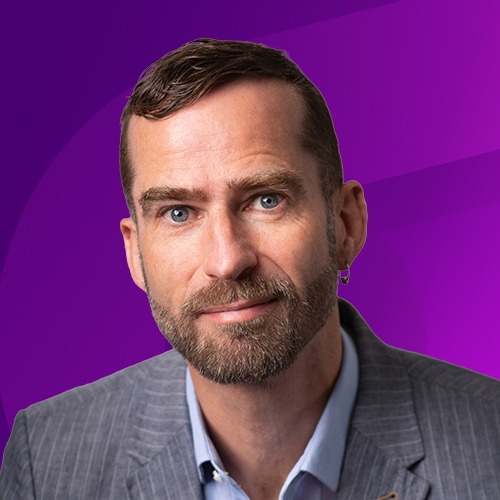iluminr’s Wargame to Gameday NYC event brought together experts from various fields to simulate and strategize responses to novel risks in our rapidly evolving world.
As the global landscape continues to shift, it is even more essential for businesses and organizations to prepare for unforeseen challenges.
Here, we explore 5 valuable lessons learned from the event that highlight the significance of proactive risk management and resilience planning in a new era of uncertainty.

1. We live in a world teeming with novel risk.
It is increasingly apparent we are surrounded by novel risks. Emerging technologies, geopolitical shifts, and environmental changes bring unprecedented challenges to individuals and organizations alike. Ignoring these risks is no longer an option, and leaders must adopt a forward-thinking approach to identify potential threats and develop robust mitigation strategies. By embracing continuous learning and strategic planning, businesses can thrive amidst uncertainty and build a more resilient future.
In this new era of uncertainty, embracing a proactive mindset becomes paramount. The event underscored the importance of not merely reacting to crises but actively preparing for and anticipating potential threats. This requires leaders to foster a culture of continuous learning and adaptability within their organizations. By staying informed about emerging technologies, geopolitical developments, and environmental shifts, businesses can better identify the early signs of potential risks and seize opportunities in volatile times.
Strategic planning and scenario-based exercises, such as Microsimulations, enable organizations to simulate and refine their response strategies, ensuring they are well-prepared to navigate uncharted territory. Embracing this forward-thinking approach not only helps organizations survive in the face of uncertainty but also positions them to thrive and lead in an ever-changing world.

2. We must move from the theoretical to practical.
While novel risks are frequently discussed academically, there is a significant gap between knowledge and practical implementation. Take, for example, the risks associated with artificial intelligence or climate change. The evidence indicates many organizations acknowledge these challenges but struggle to integrate mitigation plans effectively. Organizations must move from theory to action, putting into practice their strategies and learning over time, translating theoretical insights into concrete actions to protect businesses and society.
Organizations must bridge the gap by empowering their risk management teams with the necessary resources, support, and authority to translate academic knowledge into tangible impact.
Much of the work required in moving from discussion stages to decision making focuses on three key constructs:
- Creating necessary Context to make effective decisions. Leveraging the data available to create as complete a picture as possible as quickly as the situation permits.
- Developing the Capability to understand and respond to novel risks, including practicing varied response strategies and refining response over time.
- Building the necessary Connectivity within the organization to explore strategies in managing novel risks. Collaboration between experts from various disciplines is crucial in devising robust mitigation plans that account for the complexities of these novel risks.
By embracing a proactive and action-oriented approach, businesses can ensure they are well-prepared to tackle challenges, safeguard their operations, and contribute to a more sustainable and secure future.

3. Legal and compliance are the new enablers of innovation.
Navigating novel risks requires a guiding force, and in many cases, legal and compliance leaders play a pivotal role in this capacity. They act as conduits for change within the boundaries of possibility, ensuring that organizations adapt while adhering to relevant regulations and ethical practices. These teams increasingly assist in developing risk management strategies that are both effective and compliant with the ever-changing legal landscape. Their role extends beyond mere rule enforcement; they play a crucial part in shaping the overall risk management culture.
In the face of novel risks, legal and compliance departments act as enablers of innovation. They foster an environment where calculated risk-taking is encouraged, but always within the boundaries of the law and ethical considerations. This proactive approach not only minimizes potential liabilities but also positions the organization as a responsible and trustworthy player in the market.
In this new world of risk, legal and compliance is the new face of change leadership. Recognizing the complex and dynamic nature of novel risks, these departments have transcended their traditional roles as rule enforcers to become champions of innovation and risk management culture. By embracing a proactive approach, they ensure that risk-taking is balanced with legal and ethical considerations, enabling organizations to seize opportunities while grounding the organization with integrity in uncertainty.
4. Don’t throw out the checklist, adapt it.
Legacy response checklists fall short when dealing with novel events. Such events often lack historical precedent, making it difficult to rely solely on past experiences to predict outcomes. However, having an adaptive guide of essential considerations can be incredibly valuable. This guide should encourage critical thinking and flexibility while still providing a structured framework to approach potential risks. By blending creativity with preparedness, organizations can adapt more effectively to unforeseen challenges.
Rather than offering a rigid set of predefined steps, response strategies should prompt risk managers and teams to explore potential scenarios from multiple angles and brainstorm innovative solutions. Such an approach allows for a deeper understanding of the risks at hand and enables the organization to be more responsive and agile.
The ability to adapt rapidly to unforeseen challenges is also vital. Regularly exercising and updating playbooks under varied conditions ensures that it remains relevant and responsive to the changing risk landscape. Short, bite-sized games, such as those played at iluminr’s Wargame to Gameday workshop, can be a vital tool in testing the team’s response to different crisis situations, allowing them to refine their strategies and identify areas that may require improvement.
A culture that values continuous learning and embraces a growth mindset is instrumental in successfully managing novel risks. This approach fosters resilience, encouraging the organization to bounce back stronger after facing challenges.

5. Change is messy. Engage everyone.
Novel risks do not only impact a specific aspect of an organization; they can have far-reaching effects across various levels. It is vital for risk, resilience, and crisis management teams to expand their understanding beyond their domain responsibility and become more fluent in the overall business realm. This interconnected approach enables a holistic response to risks, ensuring that no stone is left unturned during the identification, exploration, and remediation process.
A key aspect of this interconnected approach to novel risks is the proactive and ongoing monitoring of emerging trends and developments in the business landscape. Risk, Resilience, and Crisis teams must stay vigilant to detect potential risk signals early on, allowing them to respond swiftly and effectively. This entails regularly conducting scenario analyses, horizon scanning, and trend assessments to anticipate potential disruptions and identify opportunities for innovation.
Moreover, fostering a risk-aware culture throughout the organization is crucial. Teams should be encouraged to report potential risks as part of business as usual. Creating open channels of communication ensures that valuable insights and observations from various levels of the organization can be channeled into the risk management process.
Consider the nature of engagement with external stakeholders, such as industry experts, regulatory bodies, and partners. Collaborating with these external entities through wargaming and simulation provides a broader perspective on industry trends and best practices, enabling organizations and entire ecosystems to gain valuable insights and validate their risk management strategies.
Practicing the Strategies for an Adaptive Future
The Wargame to Gameday NYC event emphasized it is no longer enough to analyze and catalog risk, we must take deliberate action in putting strategies and insights into practice. The convergence of emerging technologies, geopolitical shifts, environmental changes, and social dynamics demands a comprehensive and forward-thinking approach to risk management.
Leaders must embrace a culture of continuous learning and strategic planning to identify potential threats, explore their implications, and develop robust mitigation strategies. By acknowledging the world’s ever-changing risk landscape, organizations can position themselves to thrive in the face of uncertainty and create a more sustainable and resilient future.
To learn more about our Wargame to Gameday NYC event, check out our recent blog, or contact us to learn when Wargame to Gameday will be visiting your city.
Author:
Paula Fontana
VP, Global Marketing
iluminr

















